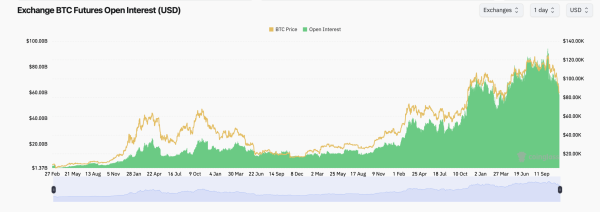Bitcoin hits $116K: Do on-chain metrics signal more upside?
Synopsis
Bitcoin hits an all-time high of $116K, driven by institutional adoption, ETF inflows, and strong on-chain metrics. With governments and investors treating it as a strategic asset, Bitcoin is evolving from speculation to a credible, global store of value amid rising geopolitical and financial uncertainty.
BTC has broken out to an all-time high of $116k for the first time in its history, signalling more than just a bullish sentiment. This marks a structural shift in how investors view Bitcoin. Amid rising geopolitical tensions, tariff escalations, and shifting global trade dynamics, Bitcoin is slowly getting mainstreamed and is now being embraced not just by early adopters but increasingly by institutional investors.
Unlike previous cycles, which were mainly driven by retail investors, this Bitcoin cycle is backed by stronger on-chain metrics, long-term holder accumulation, and consistent institutional inflows.
Investors are now analysing Bitcoin the way they would evaluate a traditional asset, looking beyond price charts to understand the underlying strength of the network. They are looking at metrics like network activity, transaction fees, user growth, and exchange reserves. But to truly understand its long-term potential, one has to get to the heart of its fundamentals. Here’s a breakdown of it.
Crypto Tracker![]() TOP COIN SETSNFT & Metaverse Tracker13.49% BuySmart Contract Tracker11.70% BuyBTC 50 :: ETH 508.83% BuyWeb3 Tracker8.41% BuyDeFi Tracker2.95% BuyTOP COINS (₹) XRP288 (10.34%)BuyEthereum295,637 (2.32%)BuyBNB61,890 (1.94%)BuyBitcoin10,281,942 (0.51%)BuyTether86 (0.19%)Buy
TOP COIN SETSNFT & Metaverse Tracker13.49% BuySmart Contract Tracker11.70% BuyBTC 50 :: ETH 508.83% BuyWeb3 Tracker8.41% BuyDeFi Tracker2.95% BuyTOP COINS (₹) XRP288 (10.34%)BuyEthereum295,637 (2.32%)BuyBNB61,890 (1.94%)BuyBitcoin10,281,942 (0.51%)BuyTether86 (0.19%)Buy
Bitcoin’s On-Chain Metrics:
Long-term investors continue to dominate supply dynamics, with 30% of the wallet addresses holding BTC for longer than 5 years. Despite recent volatility, long-term holders remain profitable with cost bases predominantly below $50,000.
Did you Know?
The world of cryptocurrencies is very dynamic. Prices can go up or down in a matter of seconds. Thus, having reliable answers to such questions is crucial for investors.
View Details »
Live Events
Source: Bitbo, India Crypto Research
Bitcoin’s recent numbers show strong support from investors and healthy activity on the network. In Q2 2025, miners earned $4 B, the highest in over a year, meaning that the network remains secure and active. This translates into continued belief in its long-term potential as a valuable digital asset.
Source: Token Terminal, India Crypto Research
Bitcoin’s network health also remained robust in July 2025, with the hashrate reaching 891M TH/s, signalling strong miner confidence after the recent halving.
Institutional Adoption of Bitcoin:
The approval of spot Bitcoin ETFs by the SEC has been extremely vital for the crypto markets, allowing institutions to offer regulated Bitcoin exposure to their clients. BlackRock’s iShares Bitcoin Trust (IBIT) has seen massive demand with over $77 B in AUM, and 140+ public companies now hold Bitcoin in their balance sheets. This reflects the growing confidence of investors in crypto as an asset class.
Government Bitcoin Holdings:
Governments around the world now hold 527,656 Bitcoins ($58.5 B) as part of their reserves. Led by the U.S. and China, over 97% of these holdings are among the top 6 countries. This shows the growing trust in Bitcoin as a strategic, long-term asset. Although the Indian Government does not hold any Bitcoin, India has ranked #1 in Global Crypto Adoption in the last 2 years.
Source: Arkham, Bitcoin Treasury, India Crypto Research. Data as of July 10, 2025
Conclusion:
Bitcoin’s response to the 2025 macro environment shows how far it has come from being a speculative asset to an institutional-grade reserve. With robust network health, high token incentives for miners, increasing long-term holders, and surging ETF inflows, Bitcoin’s adoption is accelerating. As traditional systems grapple with collateral uncertainty, Bitcoin’s scarce, transparent, and borderless design positions it uniquely for the coming monetary regime shift.
The author, Purvang Mashru, is Senior Quantitative Research Analyst at 1 Finance.


